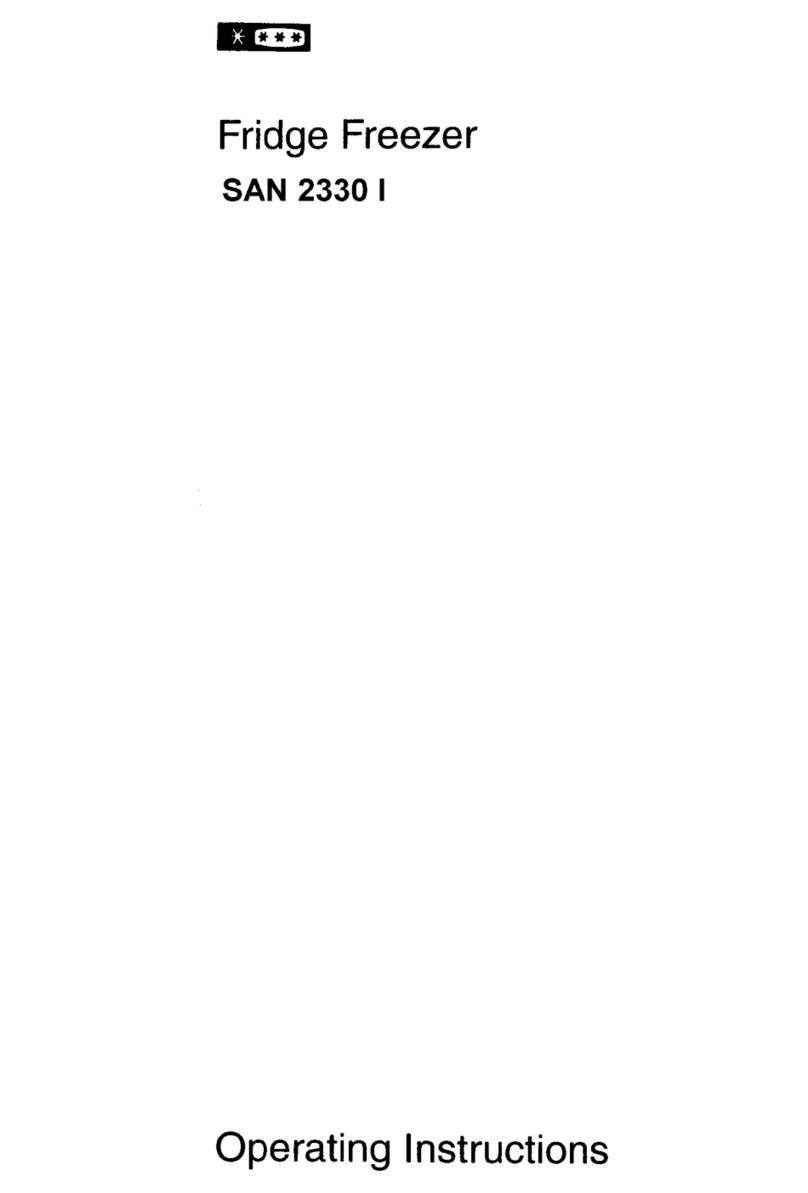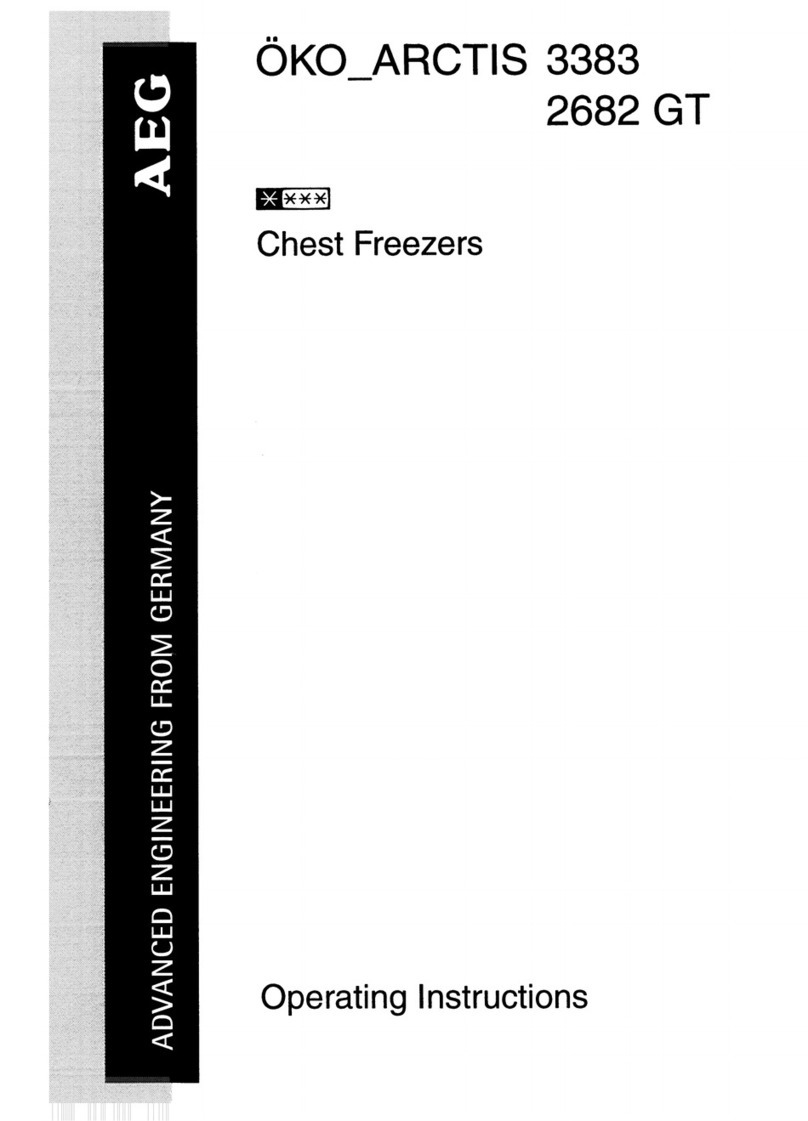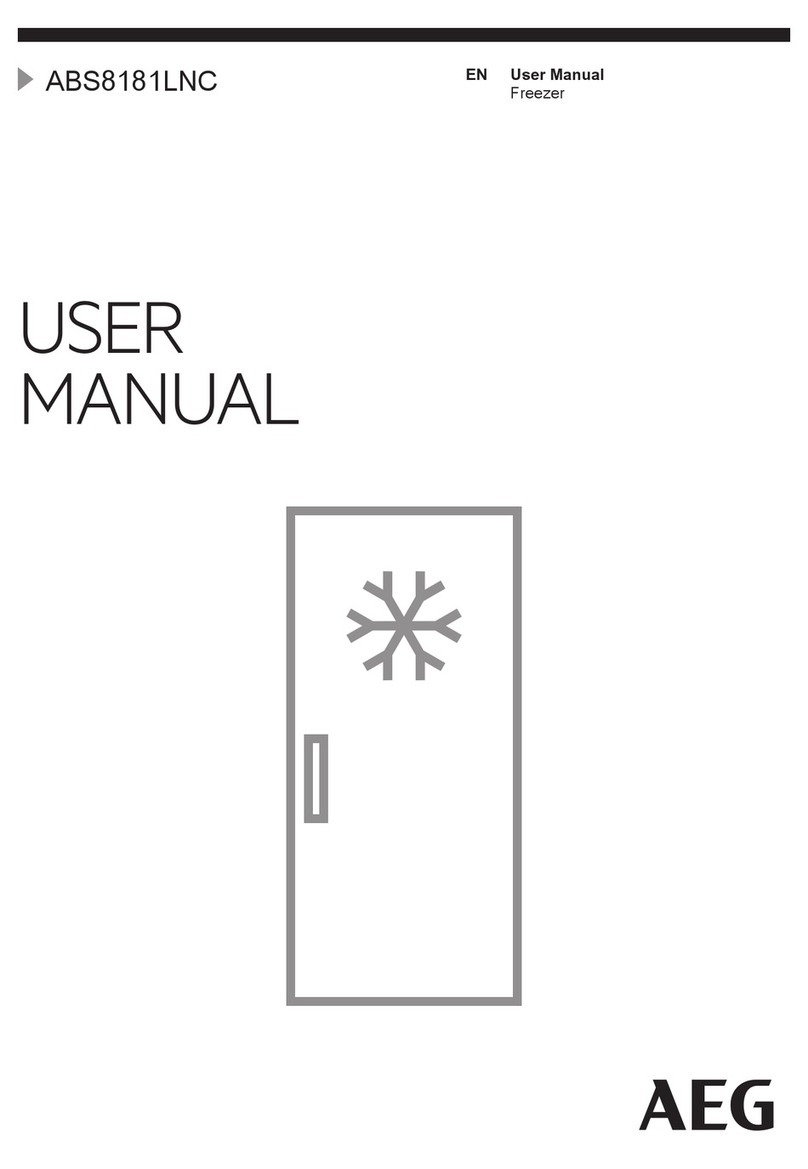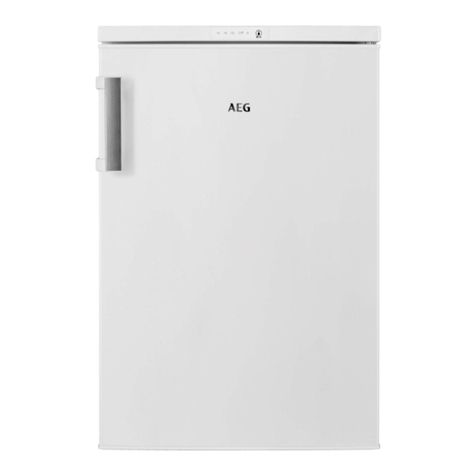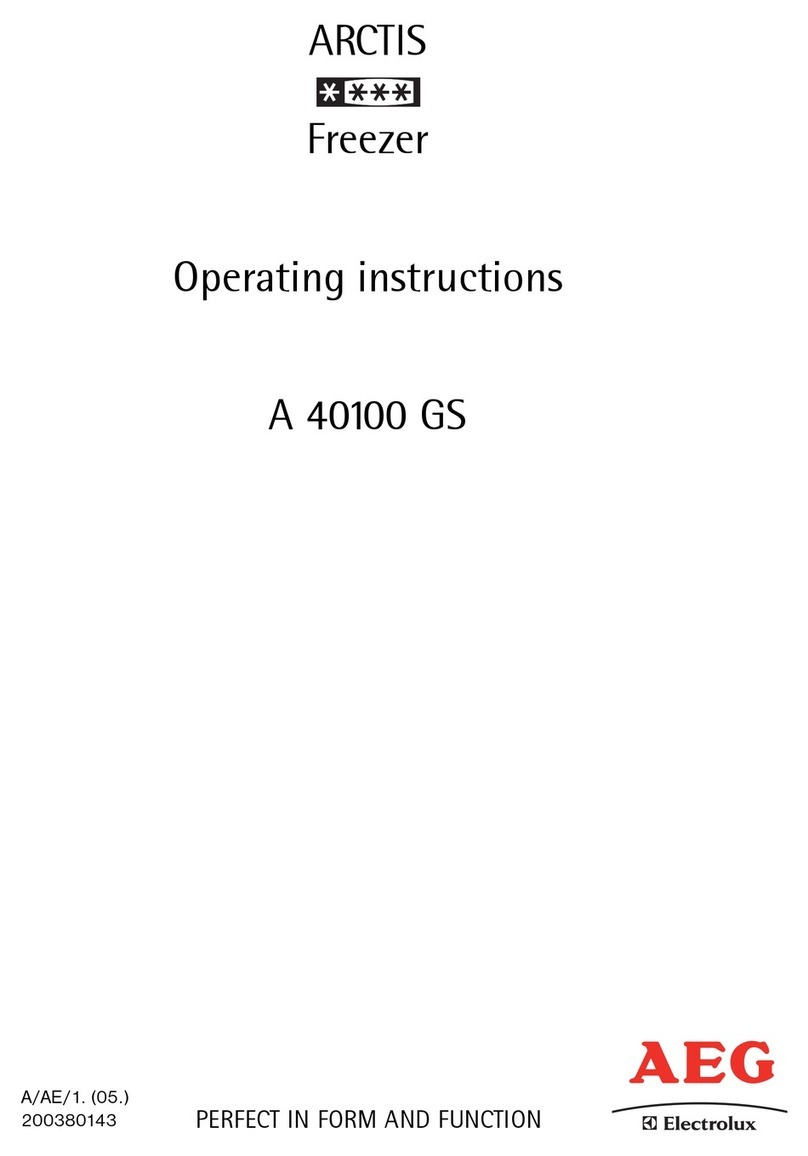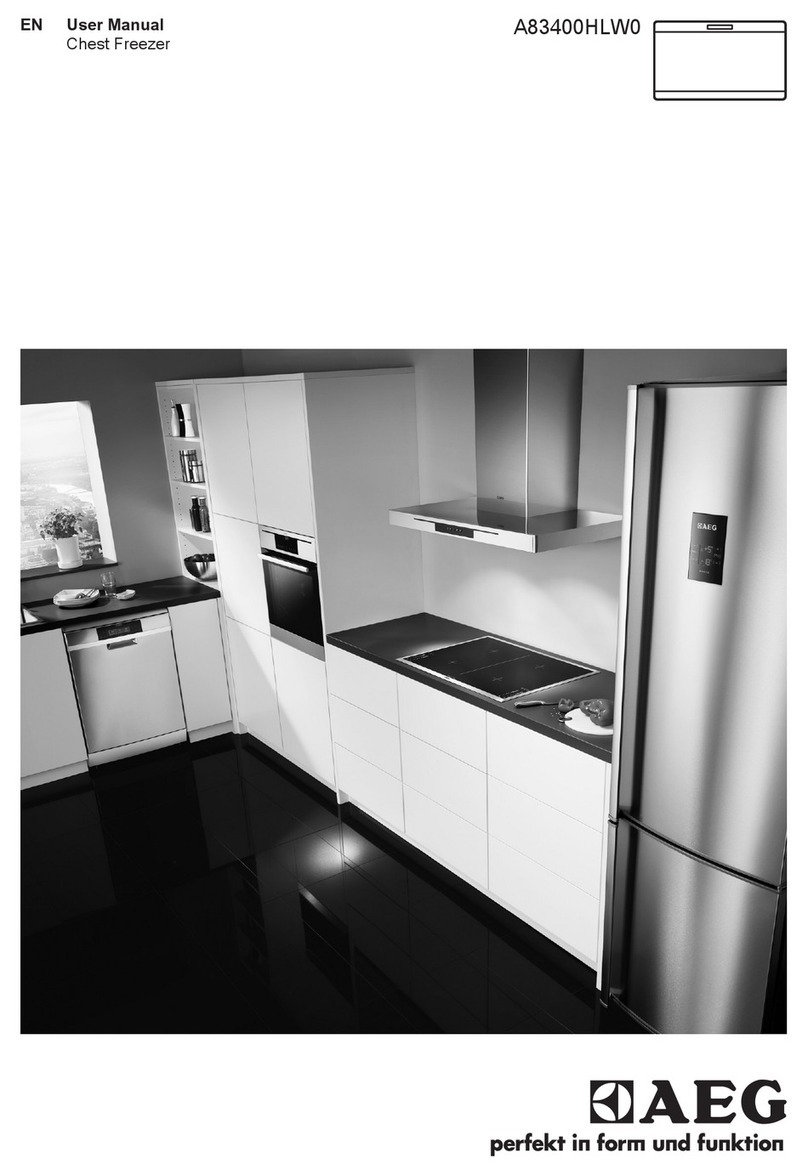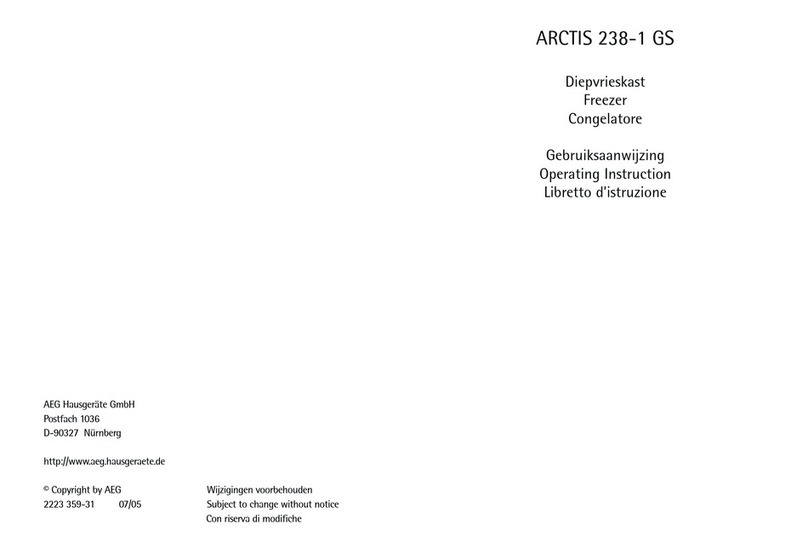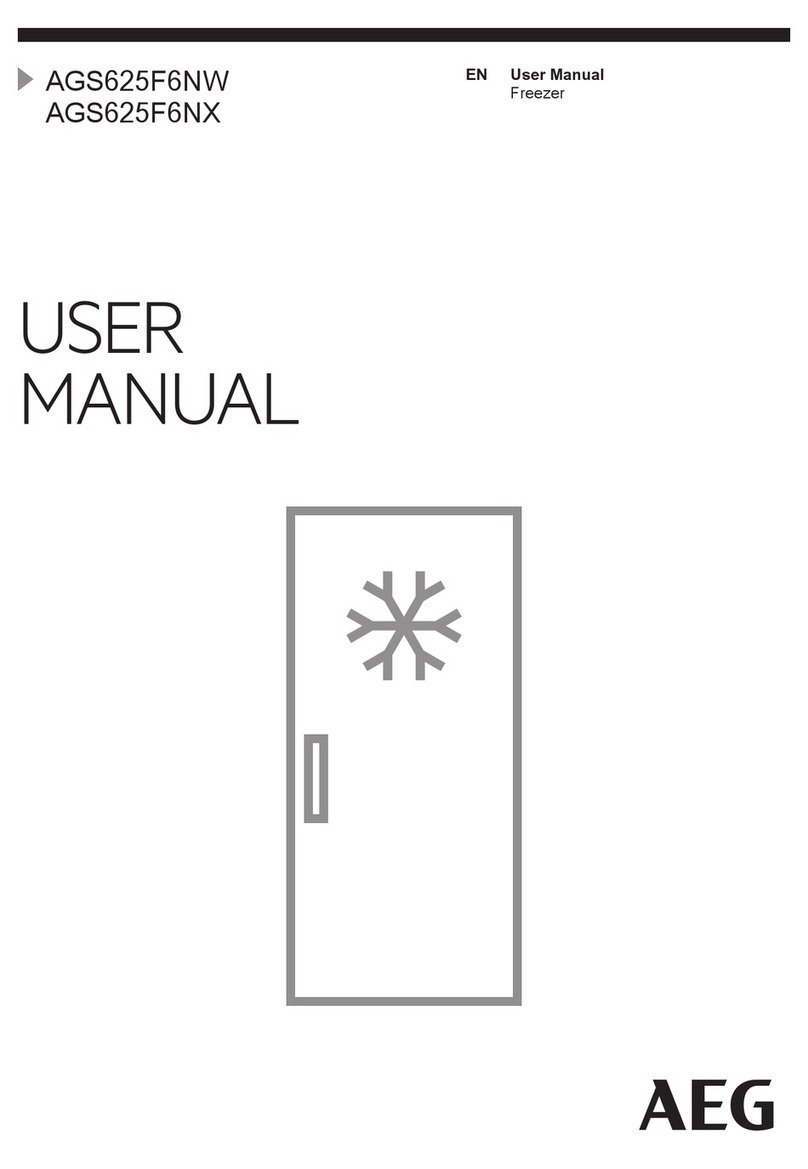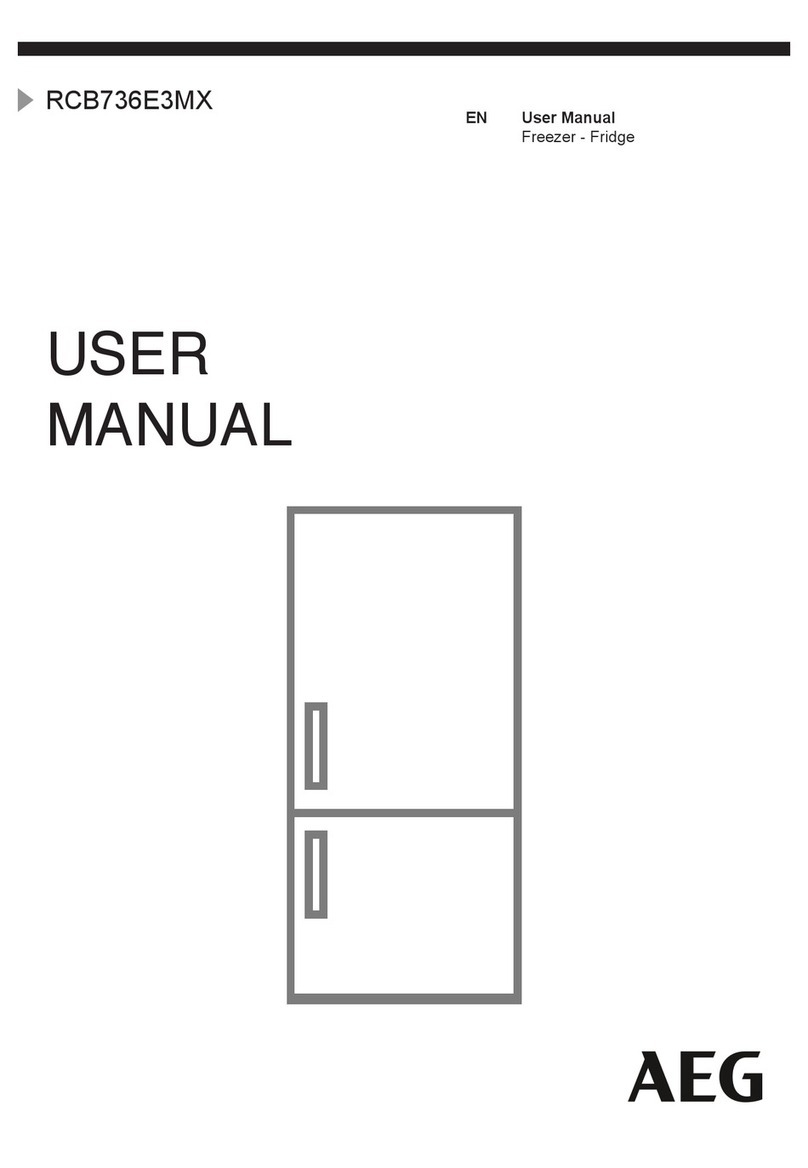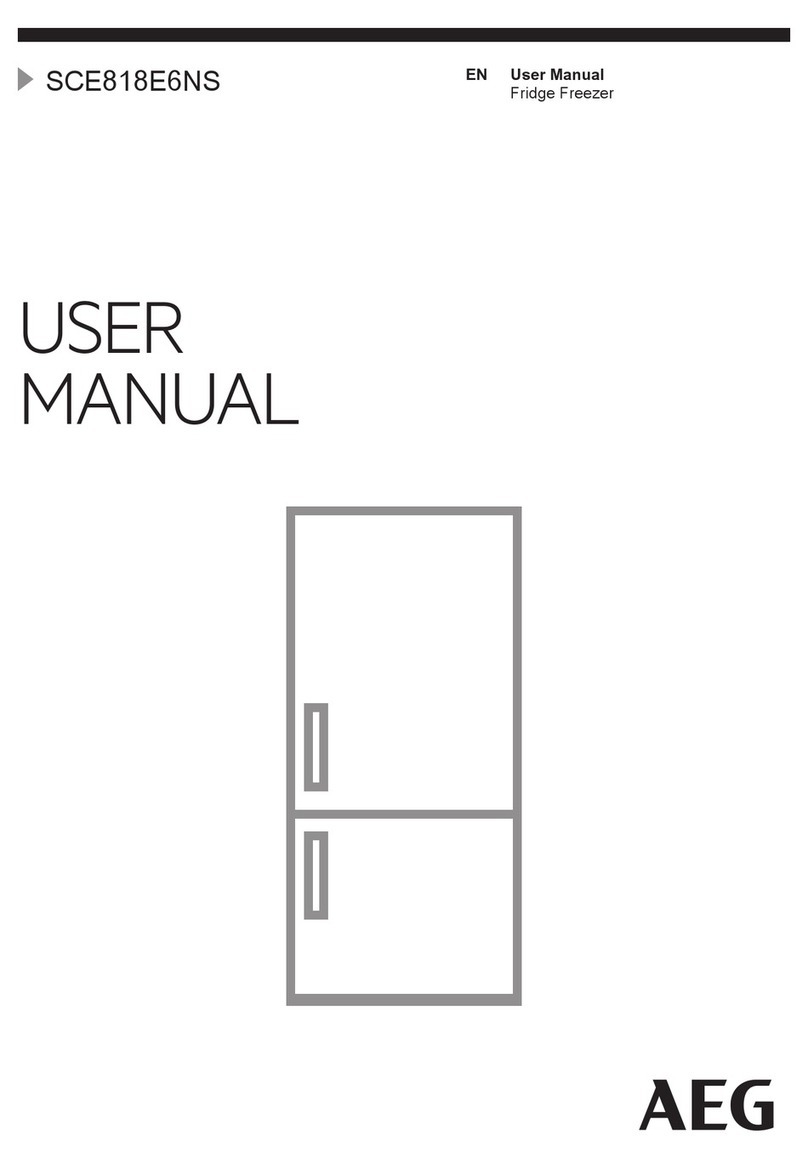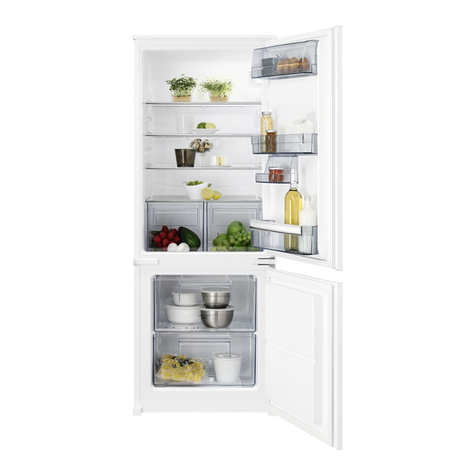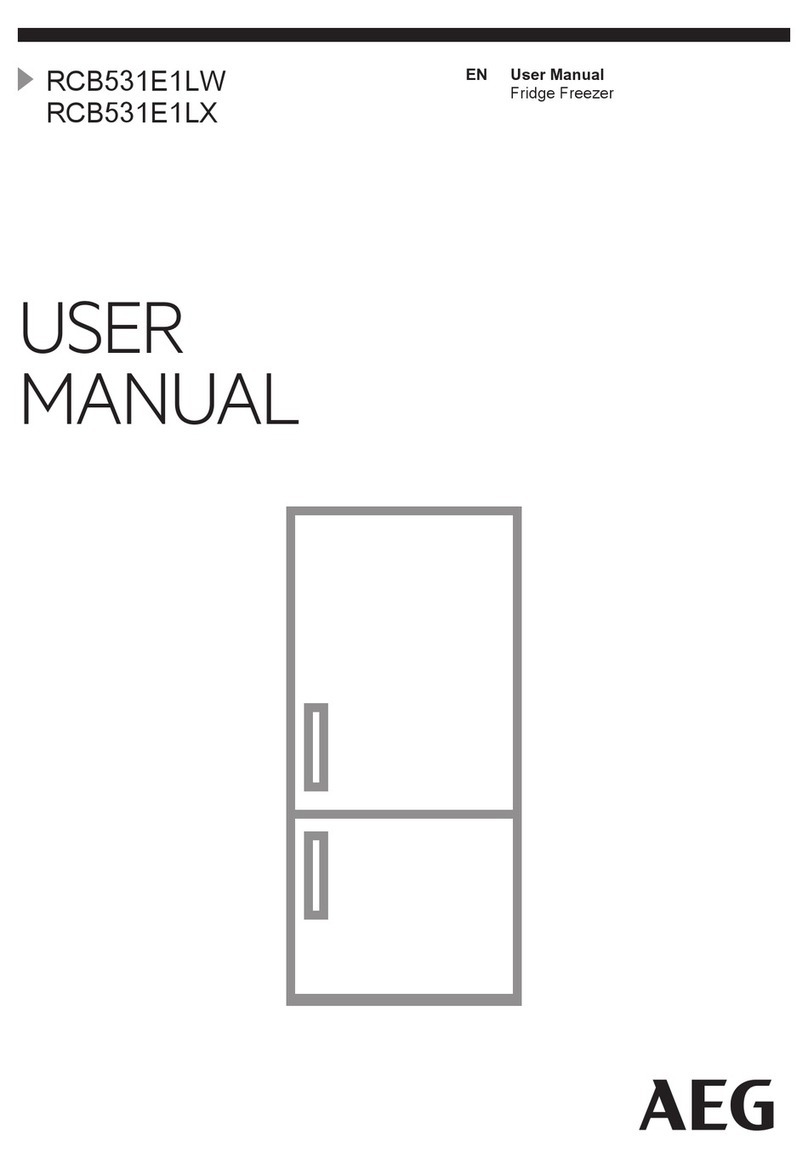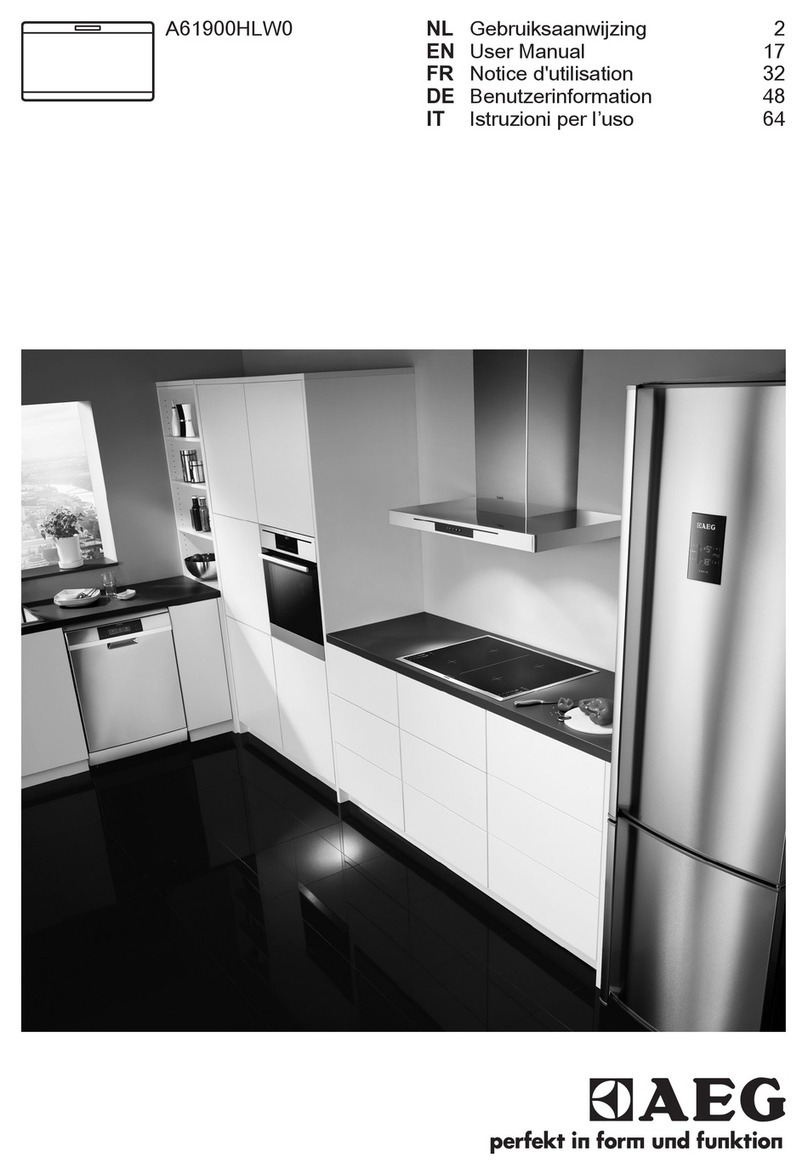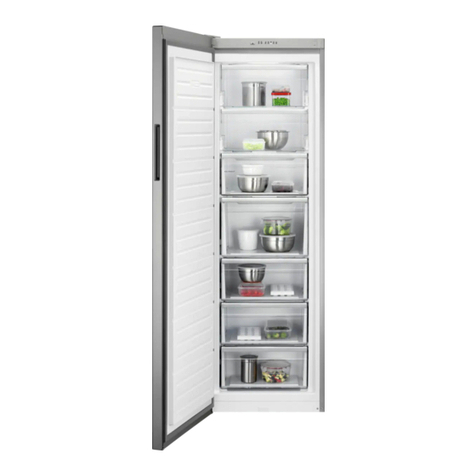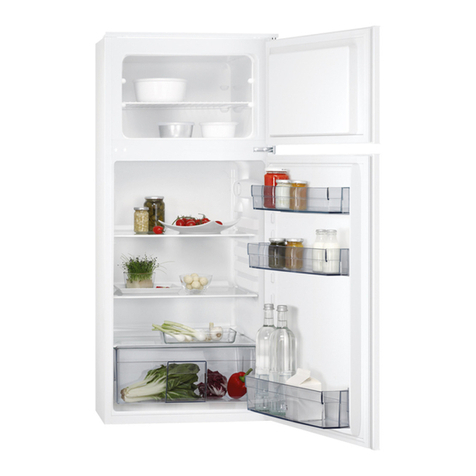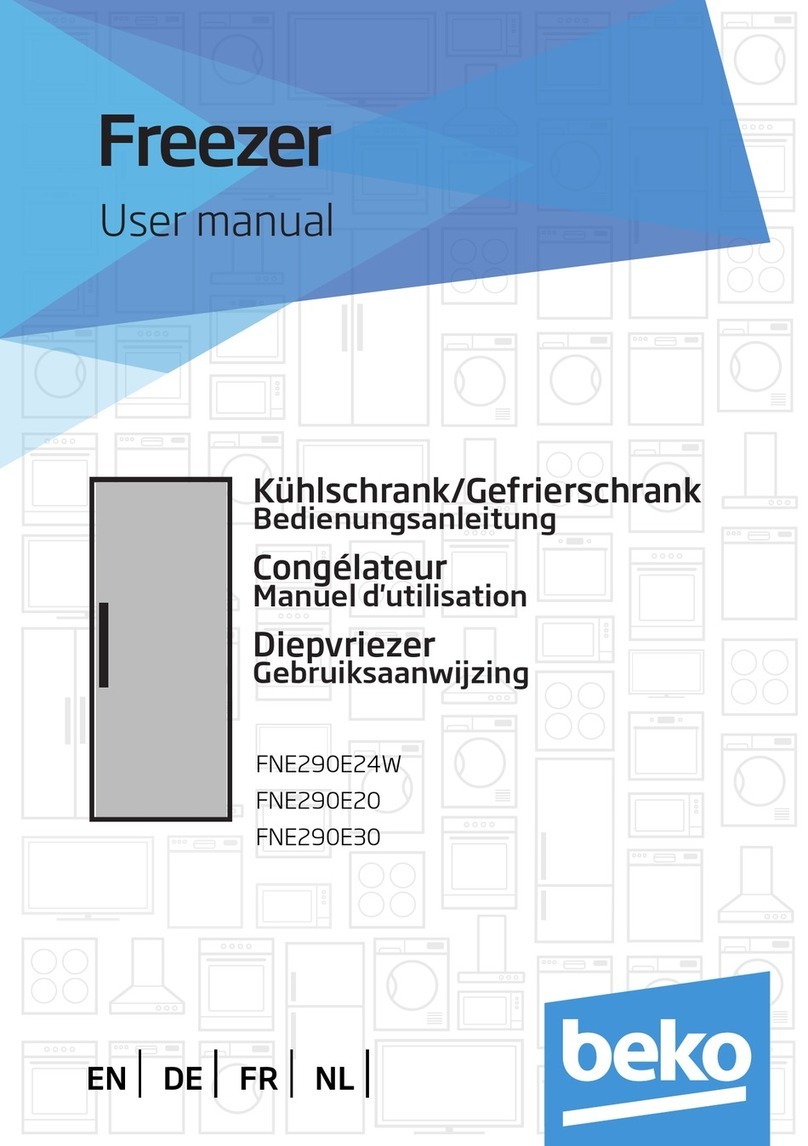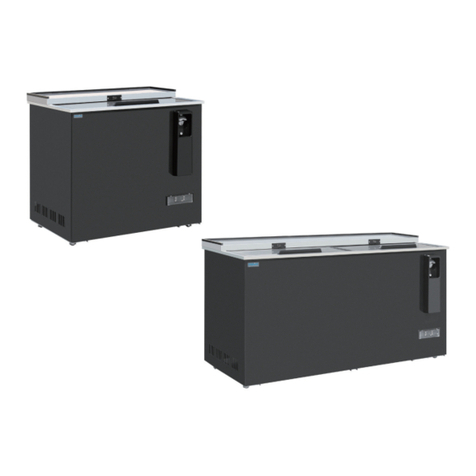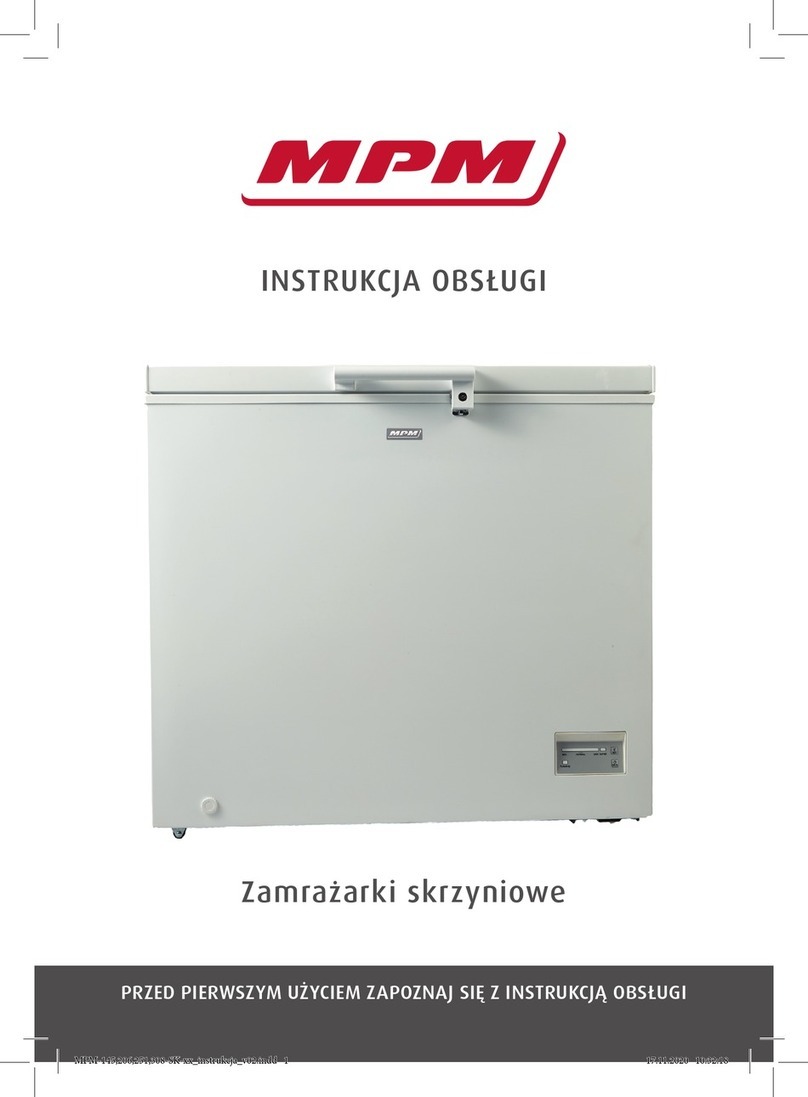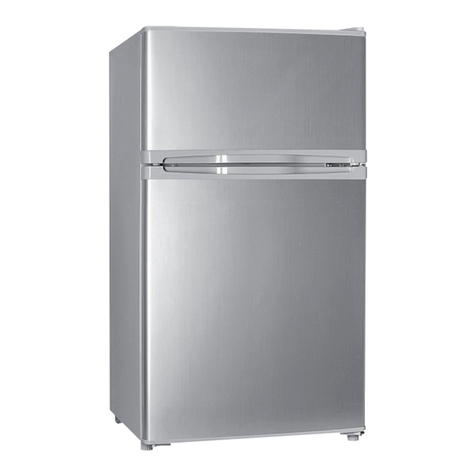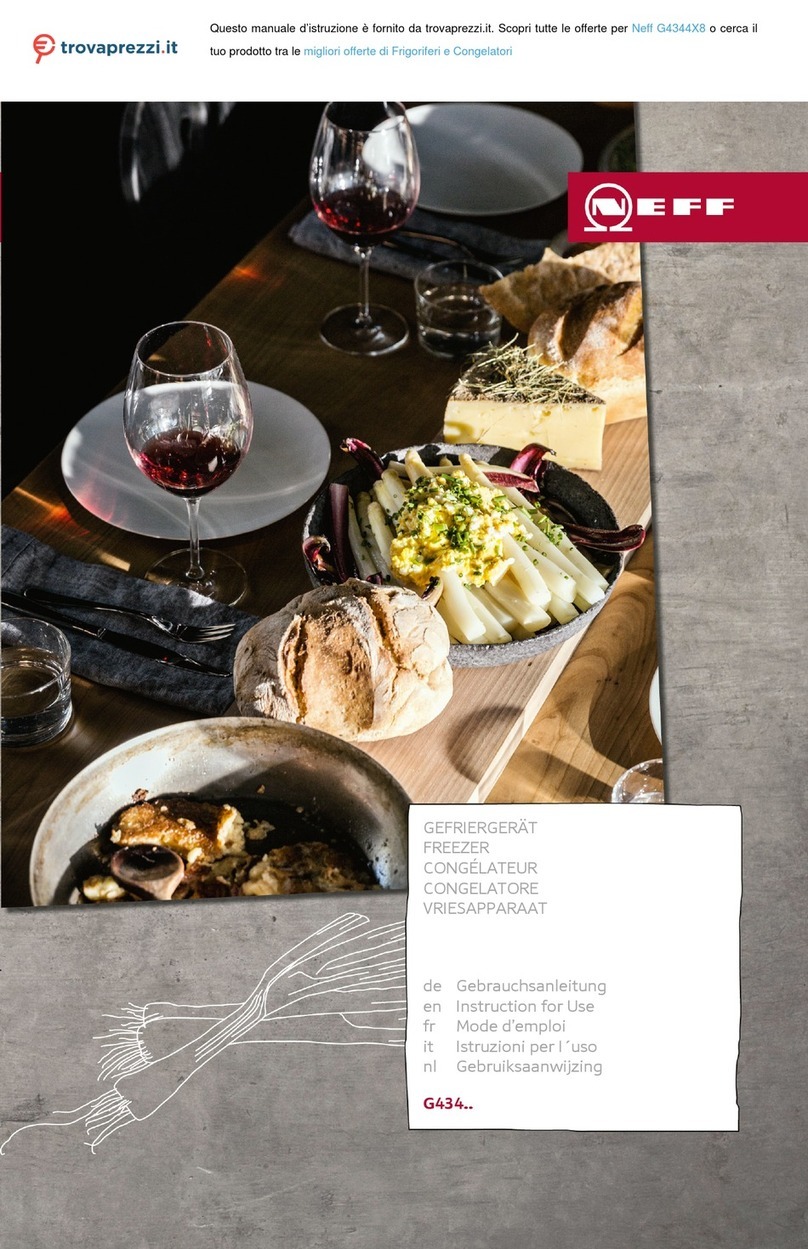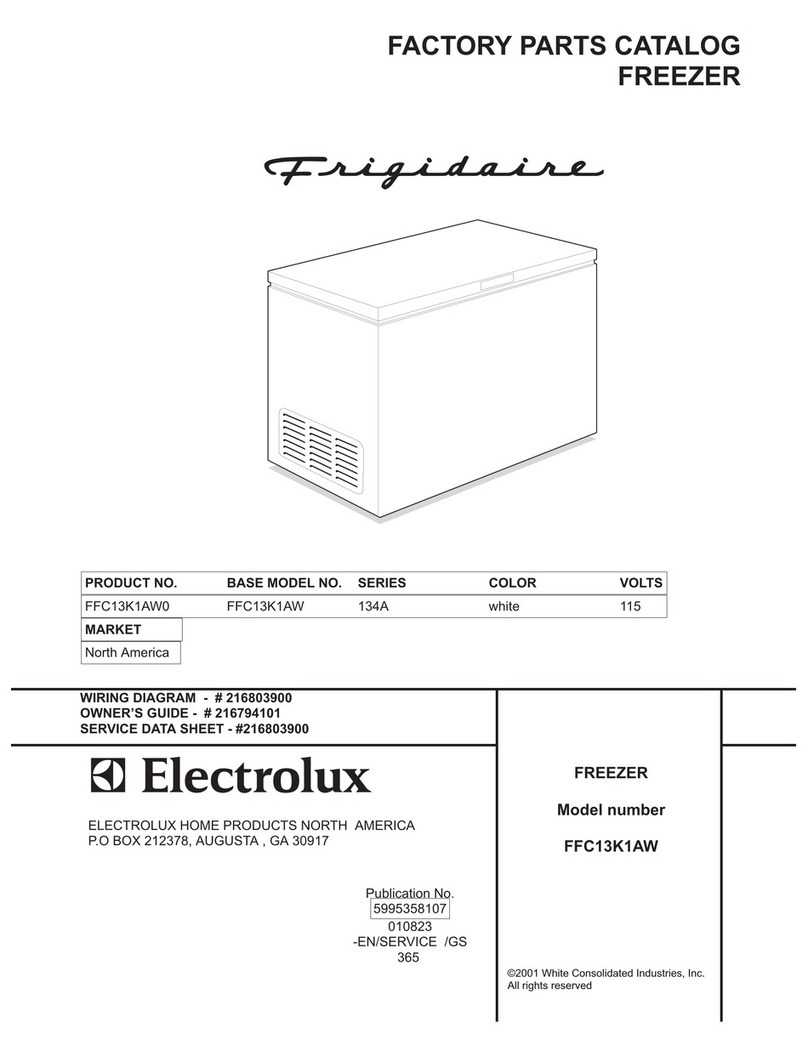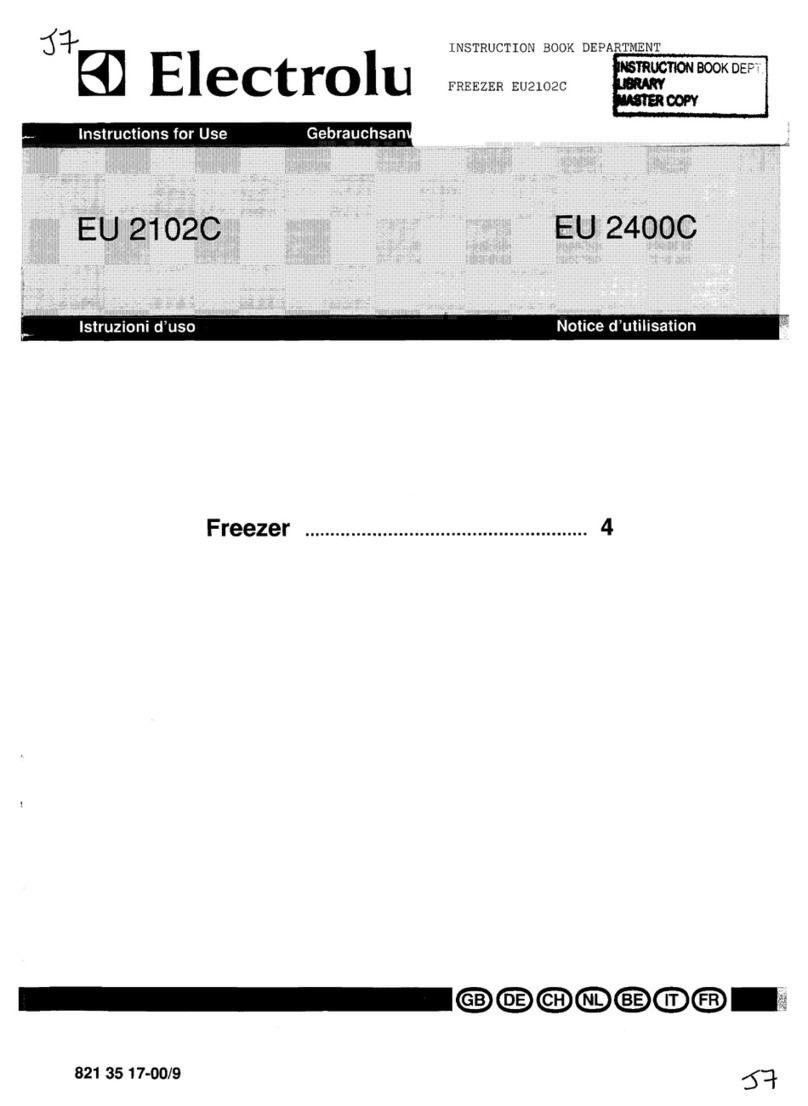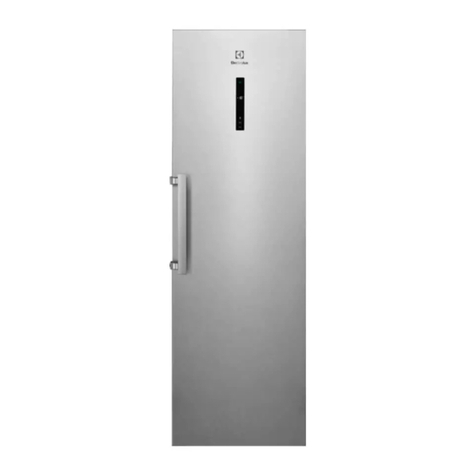25
Disposal
Appliance Packaging Information
All materials are environmentally so nd! They can be d mped or b rned at
an incinerating plant witho t danger!
Abo t the materials: The plastics can be recycled and are identified as fol-
lows:
>PE< for polyethylene, e.g. the o ter covering and the bags in the interior.
>PS< for polystyrene foam, e.g. the pads, which are all free of chlorofl o-
rocarbon.
The carton parts are made from recycled paper and sho ld be disposed of
at a waste-paper recycling collection location.
Disposal of old Appliances
For environmental reasons, refrigeration appliances m st be disposed of
properly. This applies to yo r old appliance, and - at the end of its service
life - for yo r new appliance as well.
Warning! Before disposing of old appliances make them inoperable. Remo-
ve pl g from mains, sever the power cable, remove or destroy any snap or
latch clos res. This eliminates the danger that playing children lock them-
selves into the appliance (danger of s ffocation!) or place themselves into
other life-endangering sit ations.
Disposal:
• The appliance may not be disposed of with domestic waste or b lky ref -
se.
• The refrigerant circ it, especially the heat exchanger at the back of the
appliance, may not be damaged.
• The symbol on the prod ct or on its packaging indicates that
this prod ct may not be treated as ho sehold waste. Instead it shall
be handed over to the applicable collection point for the recycling
of electrical and electronic eq ipment. By ens ring this prod ct is
disposed of correctly, yo will help prevent potential negative con-
seq ences for the environment and h man health, which co ld
otherwise be ca sed by inappropriate waste handling of this pro-
d ct. For more detailed information abo t recycling of this prod ct,
please contact yo r local city office, yo r ho sehold waste disposal
service or the shop where yo p rchased the prod ct.
36
What to do if ...
Correcting Malfunctions
A malf nction may be ca sed by only a minor fa lt that yo can rectify
yo rself sing the following instr ctions. Do not perform any other work on
the appliance if the following information does not provide assistance in
yo r specific case.
Warning! Repairs to refrigerators/freezers may only be performed by q ali-
fied service engineers. Improper repairs can give rise to significant hazards
for the ser. If yo r appliance needs repairing, please contact yo r speciali-
st dealer or o r C stomer Service.
Malfunction Possi le Cause Remedy
Appliance does not work, no
pilot light is ill minated.
Appliance is not switched on Switch on the appliance.
Mains pl g is not pl gged in
or is loose. Insert mains pl g.
F se has blown or is defective. Check f se, replace if neces-
sary.
Socket is defective. Mains malf nctions are to be
corrected by an electrician.
The freezer temperat re is not
s fficient, red light lights p,
temperat re signal so nds The appliance is near a heat
so rce.
Temperat re is not properly
adj sted.
Please look in the "Initial Start
Up" section.
Press the FROSTMATICb tton
Door was open for an exten-
ded period.
Please look in the "Installation
location" section.
Dist rbance on the appliance
Switch on the FROSTMATIC
b tton, keep the freezer clo-
sed, inform yo r c stomer ser-
vice
A large q antity of warm food
was placed in the appliance
within the last 24 ho rs.
Open the door only as long as
necessary. Press the FROST-
MATIC b tton
Green light does not light p,
yellow light lights p when
fast freeze f ction is activa-
ted, appliance is on.
Green light fa lty. Please inform yo r c stomer
service
Appliance cools too m ch. Temperat re is set too cold.
T rn the temperat re reg la-
tor to a warmer setting tem-
porarily.
Yellow light does not light p,
when fast freeze f ction is
activated, appliance is on.
Yellow light fa lty. Please inform yo r c stomer
service
